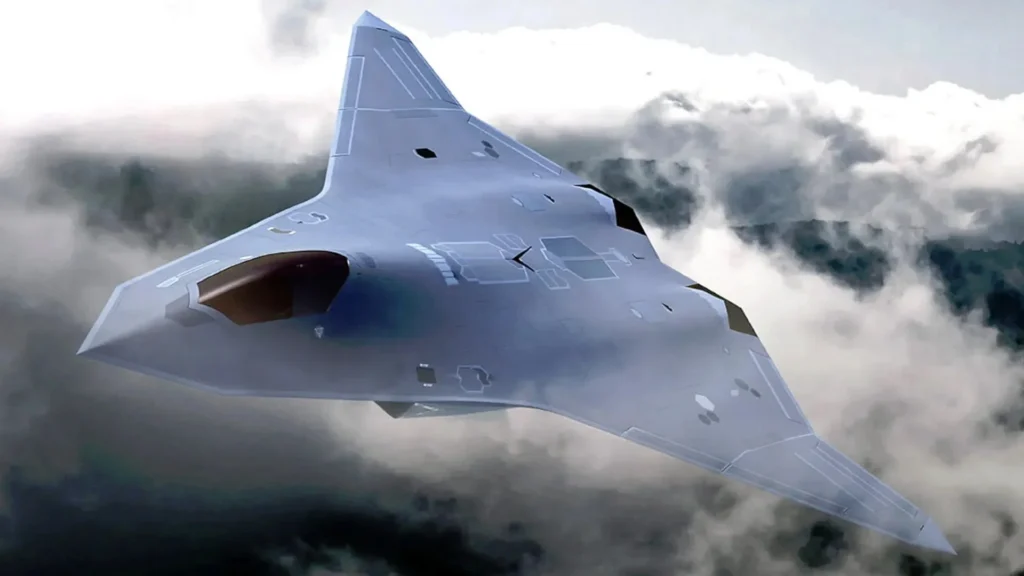
On March 21, 2025, the world caught its first official glimpse of the future of military aviation with the announcement of the F-47 aircraft. Designated as the U.S. Air Force‘s sixth-generation fighter jet, the F-47 is a product of the Next Generation Air Dominance (NGAD) program and represents a monumental leap forward in aerial combat technology. Developed by aerospace giant Boeing and revealed by President Donald Trump, this advanced stealth combat aircraft promises to redefine air superiority for decades to come. But what makes the F-47 so special, and why is it generating such buzz? Let’s dive into the details.
A New Era of Fighter Jets
The F-47 isn’t just another incremental upgrade to existing aircraft like the F-22 Raptor or F-35 Lightning II—it’s a bold step into uncharted territory. As a sixth-generation fighter, it builds on lessons from its predecessors while introducing cutting-edge technologies tailored for the evolving battlefield of the 21st century. The NGAD program, under which the F-47 was developed, aims to ensure U.S. air dominance against increasingly sophisticated adversaries, from hypersonic weapons to advanced electronic warfare systems.
While specific details about the F-47’s capabilities remain classified, experts speculate that it incorporates a blend of stealth, speed, and adaptability. Unlike fifth-generation fighters, which focused heavily on stealth and multirole functionality, sixth-generation aircraft like the F-47 are expected to integrate artificial intelligence, operate alongside loyal wingman drones, and feature enhanced sensor fusion. This combination could allow the F-47 to dominate not just in traditional dogfights but also in networked, data-driven warfare.
Boeing’s Role and the Announcement
Boeing, a titan in aerospace innovation, secured the contract to bring the F-47 to life after years of secretive development. Posts on X indicate that the project has been in the works for over five years, a timeline consistent with the complexity of next-generation military tech. The announcement on March 21, 2025, marked a significant moment, with President Trump highlighting the aircraft’s role in strengthening national security. Secretary of Defense Pete Hegseth reportedly emphasized its importance in maintaining U.S. military superiority, underscoring the strategic weight of this unveil.
This isn’t Boeing’s first foray into fighter jets—think of classics like the F/A-18 Super Hornet—but the F-47 represents a shift toward futuristic warfare. Unlike the rumored Aurora hypersonic plane from the 1980s, which remains a speculative footnote in aviation history, the F-47 is a confirmed, tangible asset poised to take flight in the coming years.
What We Know (and What We Don’t)
So, what can we expect from the F-47? Based on trends in sixth-generation aircraft design and the NGAD program’s goals, here’s a rundown of likely features:
- Stealth Beyond Compare: Enhanced radar-evading materials and shapes to make it nearly invisible to enemy defenses.
- AI Integration: Onboard artificial intelligence to assist pilots with decision-making, targeting, and drone coordination.
- Drone Synergy: The ability to control “loyal wingman” drones, expanding its reach and firepower without risking human pilots.
- Speed and Range: Potentially hypersonic capabilities and extended operational range to outpace and outlast adversaries.
- Adaptability: Modular systems that can be upgraded as threats evolve, ensuring longevity.
Of course, much of this is educated guesswork. The Pentagon and Boeing are keeping their cards close to the chest, and full specifications won’t likely emerge until the aircraft nears operational status. For now, the F-47’s mystique only adds to its allure.
Why the F-47 Matters
The F-47 arrives at a pivotal time. Global tensions are rising, and nations like China and Russia are advancing their own next-gen fighters. The U.S. needs an edge, and the F-47 could be it. Its development signals a commitment to staying ahead in the air domain, where control can dictate the outcome of conflicts on land and sea. Beyond geopolitics, the F-47 also represents a technological marvel—pushing the boundaries of engineering, computing, and aerodynamics.
For aviation enthusiasts, the F-47 is a thrilling prospect. It’s not just about raw power; it’s about reimagining what a fighter jet can be. Posts on X reflect this excitement, with users marveling at its potential while poking fun at its Boeing lineage (cue the inevitable 737 MAX jokes). Yet, beneath the chatter lies a shared sense of anticipation for what’s to come.
Looking Ahead
The F-47’s journey is just beginning. Flight testing, production, and eventual deployment will take years, and challenges—technical, budgetary, or otherwise—are inevitable. Still, its announcement on March 21, 2025, marks a milestone in aviation history. As we await more details, one thing is clear: the F-47 isn’t just an aircraft; it’s a symbol of ambition, innovation, and the relentless pursuit of dominance in the skies.
What do you think the F-47 will bring to the table? Share your thoughts, and stay tuned for updates as this sixth-generation titan takes shape!
